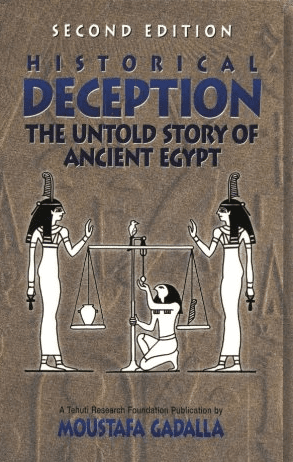بسم الله الرحمن الرحيم
Zambia News; business, finance, math, science, culture, religion, communication

The History of the Bible
this is a partial reprint from the book; Historical Deception: The Untold Story of Ancient Egypt
The Hebrew Text of the Bible
Our standard translations of the Old Testament are based on the Massoretic Hebrew text, which came into existence in the 9th or 10th centuries CE. This text was originated in the 2nd century CE after a council had been assembled at Jamnia, a small town near Jaffa, in 70 CE. At Jamnia the council agreed to the form and content of the Old Testament. Hebrew, like hieroglyphics and other Semitic languages, does not have any written vowels. The true pronunciation and interpretation of the Hebrew texts were accomplished by a body of Jewish scholars, who formulated a standard pronunciation of the Massorah (tradition of measure), between the 7th and 10th centuries CE.
The Greek Text of the Bible
The Hebrew Massoretic text is not the only Canon we have for the Old Testament. The Greek text of Alexandria is even older. In a letter written by an unknown author about 100 BCE, it was stated that Ptolemy II, the King of Egypt (285-247 BCE), ordered a Greek translation of the Bible. Ancient traditions tell us that the High Priest of Jerusalem sent 72 elders to Alexandria, together with an official copy of the Pentateuch, and that they worked for 72 days to produce the final copy of the Pentateuch in Greek. Later, the other books of the Old Testament were also translated into Greek by other scholars and the whole work became known as the Septuagint, which means The Seventy. The Greek text was adopted as the Bible of the early Church, but was abandoned later in favor of the Hebrew Massoretic text. The Septuagint is still used today by the Greek Orthodox Church as its authorized Bible
The Biblical Ancient Egyptian/Israelites’ Encounters
There is no doubt that there are serious problems with the chronology of many events in the Bible. This came as a result of the many narrators and editors working along the span of centuries, as well as the bad blood between the Jews and Egypt, after the Exodus. The encounters between the Israelites and ancient Egypt can be divided into three eras:
1. Pre Sojourn in Egypt
Abram and Sarai entered Egypt for a period of time. Upon Abram and Sarai’s return from Egypt to Canaan (present-day Israel/Lebanon), major changes began to occur to their small tribe. The Bible tells us that the Lord told Abram: Know for certain that your descendants will be aliens living in a land that is not theirs, and they will be enslaved and ill-treated for four hundred years...The fourth generation will return here...
God also made a covenant with Abram, saying: To your descendants I give this land, from the river of Egypt to the great river, the Euphrates...
- Sarah gave birth to Isaac who was not allowed to go to Egypt
- Isaac begat Jacob in Canaan
- Jacob begat Joseph
The evidence from the Ancient Egyptian history, as detailed in later chapters will show that: Twthomosis (Tuthomosis) III was the Pharaoh in the Abraham and Sarah story, and that Twthomosis III is the historical character of the biblical King David.
2. Israelites’ Sojourn in Egypt
- Joseph’s half brothers sold him as a slave, in Egypt. He later became the second in command to the Pharaoh. The Pharaoh allowed Joseph to bring his family to Egypt.
- Jacob (Joseph’s father) who was also known as Israel, took his tribal family of 70 to settle in Goshen, east of the Nile delta.
When did the Israelites enter Egypt and how long did they remain there before the Exodus?
It is generally accepted that they were in Egypt at the end of the 18th Dynasty, and into the 19th (c. 1308 BCE). Scholars will disagree on when they arrived and when they departed.
The Old Testament does not provide any dates, or the name of the Pharaoh’s capital city at the time, or the name of the Pharaoh, referring to him only as: Pharaoh, King or Pharaoh, King of Egypt!
The Old Testament provides two contradictory accounts about the length of time the Israelites spent in Egypt:
a. Duration of 430 years: Now the sojourning of the children of Israel, who dwelt in Egypt, was four hundred and thirty years. (Exodus 12:40)
b. Duration of four generations: The warning to Abraham ... Know of a surety that thy seed shall be a stranger in a land that is not theirs, and shall serve them; and they shall afflict them four hundred years ... But in the fourth generation they shall come hither again. (Genesis 15:13,16) In Hebrew it reads ‘wa dor rabi’i yashwbw hena’.
The duration of four generations, and not 430 years, is the correct duration for the following reasons:
a. The exact translation of this Hebrew verse is: “And the fourth (dor) return they here.” Grammatically ‘the fourth dor’ is the subject of the verb. Therefore, dor can only mean ‘generation’. The word dor was never used to mean a hundred-year cycle in Hebrew or Assyrian, or Ugaritic texts.
b. What confirms the biblical word dor to mean a generation is the fact that the Pentateuch names only four generations between the time of the Descent into Egypt and the Exodus.
c. The Talmud does not agree with 430 years either as the length of the Israelites’ sojourn in Egypt: And the children of Israel journeyed from Raamses to Succoth. Two hundred and ten years after their entrance into Egypt, the Israelites departed therefrom, six hundred thousand men, with wives and children.
The evidence from the Ancient Egyptian history, as detailed in the following chapters will show that:
- Joseph entered Egypt and became the vizier (second in command) to Pharaoh Twthomosis IV (1413–1405 BCE.) and was the vizier for the succeeding Pharaoh, Amenhotep III (1405-
1367 BCE).
- Joseph’s daughter, Tiye, was married to Amenhotep III. Tiye gave birth to Akhenaton and Semenkhkare.
-Akhenaton begat Twtankhamen (Tutankhamen).
-The four generations of the Sojourn are actually: Joseph, Tiye, Akhenaton (to be identified later as the biblical Moses), Twtankhamen (to be identified later as the biblical Jesus)
-The Egyptian Pharaoh Amenhotep III is the historical character of the biblical King Solomon.
3. The Exodus and Living in the Promised Land
-Moses (Akhenaton), who lived in exile in Sinai for several years, went back to Egypt to challenge the authority of the Pharaoh at that time. He was allowed to leave with the Israelites from Egypt in what is known as the Exodus. After wandering in the desert, Moses died and the Israelites settled in their promised land.
- They were ruled by King David whose military might extended from the Nile to the Euphrates.
- King David begat Solomon, who sat on his father’s throne after his death.
- The new Israelite Kingdom vanished after Solomon’s death as quickly as it was created by King David.
The historical evidence from Ancient Egypt, in the following chapters, will show that:
- Moses was killed by King Seti I (1333-1304 BCE) and the Israelites wandered the desert for forty years before settling in Canaan. The occupation of Canaan was a gradual process, as also confirmed in the Book of Judges.
- The biblical accounts of King David’s wars match precisely with those of King Twthomosis III (1490-1436 BCE).
- The biblical accounts of King Solomon’s life and lack of wars match precisely with those of King Amenhotep III (1436-1413 BCE).
Chronology of the 18th Dynasty
King Length of Reign Dates
Ahmosis 22 1575-1550 BCE
Amenhotep I 21 1550-1528 BCE
Twthmosis I 4 or 9 1528-1510 BCE
Twthmosis II 18 1510-1490 BCE
Hatshepsut 20 or 22 1490-1468 BCE
Twthmosis III 54 1490-1436 BCE
Amenhotep II 23 1436-1413 BCE
Twthmosis IV 8 1413-1405 BCE
Amenhotep III 38 1405-1367 BCE
Amenhotep IV 6 1367-1361 BCE
(Akhenaten)
Semenkhkare - 1361-1361 BCE
Twtankhamun 9 1361-1352 BCE
Aye 4 1352-1348 BCE
Horemheb 13 1348-1335 BCE
Communism Dominance of Democracy Economy
Black History That We Don't Know
Prayer is the Foundation for Success
The War: America Can Not Win the Victory
dated .001423 editorial
Africa, Pan-Africanism, and the
Pre-dated .01023: old science
Dated .01041 posted culture
Zambia's problem is not the Chinese
Dated .00174 current religion

















